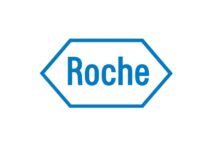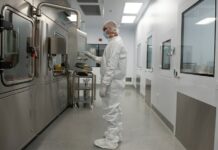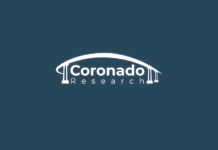In 2023, the market for cell and gene therapy was worth USD 18.8 billion. In the years to come, the market is projected to grow at a rate of 15.66% per year, reaching USD 60.1 Billion by 2032.
Regulatory changes, new technologies all the time, large investments and funding, changing regulatory environments, rising healthcare costs, strong government support, especially in developed countries, fast infrastructure growth, more patient awareness, big investments in research and development (R&D) activities, and strategic partnerships and collaborations between academia and industry drive the market.
Regulatory progress: A major market driver
Because of improvements in governing systems, the area of cell and gene therapy has made a lot of progress. Regulatory groups like the U.S. The Food and Drug Administration (FDA) and the European Medicines Agency (EMA) have made it easier for new treatments to be developed and approved by setting up detailed rules and speeding up the approval process. These systems include programs like the Priority Medicines (PRIME) scheme in Europe and the Regenerative Medicine Advanced Therapy (RMAT) title in the United States. These schemes speed up the review process for potential treatments that meet unmet medical needs. This kind of governmental backing has cut down on the time and money needed to bring cell and gene medicines to market, which has led to more investment and study in this area.
Harmonization not only makes sure that treatments meet high standards for safety and effectiveness, but it also makes it easier for them to be sold all over the world. Regulatory officials are also working with partners more and more through public meetings and advice groups. This is to make sure that the new rules are based on science and business knowledge.
More than 3,800 gene therapy studies are listed on clinicaltrials.gov, with over 1,000 of them currently recruiting participants. More than 2,900 gene therapy studies have been started around the world. Most gene therapy IND applications were made in 2018, with 206. That’s almost twice as many as the 106 applications made in 2017. In 2015, the FDA cleared its first gene therapy product. In 2017, three more were approved, and in May 2019, two more were approved. There are 291 gene therapy projects in phase III right now. The FDA plans to approve 40 gene treatments by 2022, then 10 to 20 per year by 2025, and 200 IND applications each year by 2020.
Academics, businesses, and government agencies have been able to work together more because regulatory groups are taking the initiative. Public-private relationships have become an important way to deal with the difficulties and high costs of developing cell and gene therapies. Government funds and funding often help these kinds of partnerships, which lowers the financial risks for businesses working in this new area. Overall, improvements in regulations have made it easier for the cell and gene therapy market to grow by speeding up the research process, lowering hurdles to entry, and encouraging people to work together.
New technologies are always being developed, which helps the market grow
The cell and gene therapy market has been driven in large part by how quickly new technologies are improving. New advances in gene editing technologies, like CRISPR-Cas9, have made it much easier to change genetic material exactly. This has made it possible to create focused and personalized treatments. Researchers can fix genetic flaws at their source with these technologies. This could lead to cures for many genetic problems and illnesses that were thought to be incurable before.
Advanced virus vectors are key to the growing success of hematopoietic stem/progenitor cell gene therapy (HSPC-GT). They make gene transfer fast and safe. Adding new site-specific gene editing technologies like CRISPR-Cas to HSPC-GT increases its usefulness and allows precise genetic changes. Lentiviral vectors (LVs) have shown promise in clinical studies; by 2020, 400 people with 14 illnesses will have been treated, showing long-lasting effects. As of 2020, LVs have been used to treat 279 people in 34 studies, and HSPC-GT devices are now on the market for diseases like β-thalassemia and cerebral adrenoleukodystrophy.
In addition, improvements in cell engineering methods have made cell-based treatments much more effective and safe. For example, chimeric antigen receptor (CAR) T-cell therapy has been very successful at healing some kinds of cancer by changing the immune cells of patients to find and fight cancerous cells. New ways of making things, like automatic cell culture systems and bioreactors, have also made it easier to make more cell therapies and keep the quality high. This solves one of the biggest problems in the field.
Adding artificial intelligence (AI) and machine learning (ML) to the process of finding and developing new drugs has also sped up the search for possible treatment targets and made clinical trial designs better. AI systems can look at huge amounts of biological data to guess how patients will react and find signs for how well a treatment is working. This lets therapists tailor their methods to each patient and improve their results. These new technologies working together have not only made cell and gene therapies more useful as medicines, but they have also made their research faster and cheaper, which has helped the market grow.
A big increase in investments and funding is helping the market grow
Venture capital firms, pharmaceutical businesses, and government bodies are among the groups that have put more money and invested in the cell and gene therapy market. This surge of money has been very helpful in moving forward with research and development, funding clinical studies, and making it easier to bring new medicines to market. Venture capital investments in biotech startups that focus on cell and gene therapies have given scientists the money they need to turn their new discoveries into useful medicines.
In the US, a computer model was made to look at how new gene treatments would affect the economy. It focused on 109 late-stage clinical studies that will happen before January 2020. Based on modest assumptions, the model said that gene treatments cost about $20.4 billion a year. The spending was broken down by age group, which showed that half of the yearly budget will go to adults and children who don’t have Medicare. It was allowed in the U.S. in December 2022. The four gene treatments are voretigene neparvovec, onasemnogene abeparvovec-xioi, brexucabtagene autoleucel, and etranacogene dezaparvovec. Treatments that cost a lot, like voretigene neparvovec at $425,000 per eye and onasemnogene abeparvovec-xioi at $2.1 million per patient, make it hard for some people to get them. About 340,000 people in the U.S. are projected to get gene therapy by 2030. To wrap up the study, it looks at different payment methods and policies that can help patients get the benefits of these treatments while also keeping their high costs in check.
Pharmaceutical companies are more often making strategic agreements, deals, and working together with biotech companies because they know how useful cell and gene treatments can be. Through these agreements, big drug companies can use the specialized knowledge and tools of smaller companies. This speeds up the research process and lets them offer more treatments. Also, government programs and funds have been very helpful for starting medical studies and funding research, especially for rare diseases and “orphan indications” that don’t have a lot of market appeal.
The rise in IPOs and M&A deals is another sign that investors have more faith in the cell and gene therapy business. Businesses in this field have been able to get a lot of money through initial public offerings (IPOs), which has helped them expand their operations and move their research projects forward. The strong financial support not only makes sure that companies working on these treatments can stay in business, but it also creates a competitive atmosphere that encourages new ideas and speeds up the release of new treatments.
Top Companies in the Market for Cell and Gene Therapy:
In their market study paper, IMARC looks at all of the competitors in the market in great detail. In the global market for cell and gene therapy, a number of well-known companies are increasing their production rates and forming agreements with other companies. Also, they are getting governmental approvals and starting clinical studies that will change the world. Bristol-Myers Squibb, Gilead Science, Kolon TissueGene Inc., Orchard Therapeutics plc., Pfizer Inc., Renova Therapeutics, and Spark Therapeutics, Inc. are some of the big names in the business.
The FDA approved BLINCYTO® (blinatumomab) on June 14, 2024, for treating CD19-positive Philadelphia chromosome-negative B-cell precursor acute lymphoblastic leukemia (B-ALL) in the consolidation phase, no matter if the patient has measurable residual disease (MRD) or not. The approval is based on the Phase 3 E1910 clinical study, which showed that the drug raised total survival rates and cut the risk of death by 58% compared to treatment alone. BLINCYTO® is the first Bispecific T-cell Engager (BiTE®) medicine to be approved for this use. This is its third approved use and changes the way B-ALL patients are treated.
The European Medicines Agency’s Committee for Medicinal Products for Human Use (CHMP) said on February 23, 2024, that QALSODY® (tofersen) should be approved for sale as a medicine to treat people with SOD1-ALS, a rare genetic form of ALS. If the European Commission agrees, QALSODY will be the first drug in the EU to target a genetic cause of ALS. The CHMP’s suggestion comes from clinical studies that showed large drops in plasma neurofilament light chain and possible changes in patients’ functional skills.
LYFGENIA is a gene treatment for sickle cell disease. On June 5, 2024, Bluebird Bio, Inc. finished the first commercial cell collection for it. In December 2023, the FDA gave the green light to LYFGENIA for people who have had vaso-occlusive events in the past. Children’s National Hospital, which is part of Bluebird’s network of more than 60 Qualified Treatment Centers, was used to collect the cells.
A Look at the Market:
Cell and gene treatments are now essential for healing a wide range of conditions, which has a big effect on the world market. These treatments may be able to cure cardiovascular disease by fixing harmed heart cells and making the heart work better. Additionally, new gene-editing methods can fix genetic flaws that cause heart problems from birth. Oncology diseases get the most help and have the biggest part of the market. New treatments, like CAR-T cells and gene-editing technologies, are able to target and kill cancer cells more precisely. This has led to recovery and longer life rates in cancers that were thought to be fatal before.
Cell and gene therapies are revolutionary ways to treat genetic diseases because they fix genetic problems at the molecular level. Gene therapy vectors and techniques like CRISPR are being used to treat diseases like muscle dystrophy and cystic fibrosis, which gives people hope for long-term fixes. Gene therapy can boost immune reactions to infectious diseases by teaching immune cells to spot and kill bacteria. This shows hope in the fight against HIV and hepatitis.
There are also big steps forward in treating neurological diseases. Gene therapy could help treat diseases like Parkinson’s and Alzheimer’s by sending helpful genes to the brain to recover function and stop the disease from getting worse. Personalized treatments that target genetic reasons can also help people with metabolic and inflammatory diseases live better lives. Overall, cell and gene therapies are what drive the global market because they offer new, possibly beneficial treatments for a wide range of conditions. These therapies are changing how diseases are treated and how well patients do.
Analysis by Region:
The US and Canada are the biggest markets for cell and gene therapy in North America. Other big markets are in Europe (including Germany, France, the UK, Italy, Spain, and others), Asia Pacific (including China, Japan, India, South Korea, Australia, Indonesia, and others), Latin America (including Brazil, Mexico, and others), and Africa and the Middle East. The biggest market, according to the study, was in North America.
In North America, the market for cell and gene therapy is driven by a complex healthcare system and a lot of money spent on research and development. The US is in charge of the area because it has a strong biotech industry and good rules for businesses. There are many research studies and big pharmaceutical companies that help the business grow. Also, big financial help from the government and businesses speeds up the creation of new treatments that are breaking new ground. Canada’s strong healthcare system and attempts by the government to support scientific progress also make this better.
The cell and gene therapy business in Europe is driven by science investments and regulations that look to the future. Strong relationships between university and business, backed by the government, are what Germany and the UK do best to encourage new ideas. The EMA provides a unified legal path that makes it easier for companies to enter the European market. Countries like France, Italy, and Spain play a big part because they have very good healthcare systems and educate their patients more.
The Asia-Pacific market for cell and gene therapy is growing quickly because people are spending more on health care and science is making great strides. China and Japan are the only countries in the area that get a lot of help from their governments and spend a lot of money on research and development. South Korea and Australia are also very good at having modern medical study facilities and getting people to take part in clinical studies. India’s growing medicine business and rising rates of genetic diseases are also helping the market grow.
The cell and gene therapy market is growing in Latin America because healthcare infrastructure is getting better and more money is being put into biological research. Brazil and Mexico are very important, and their governments and global partnerships are supporting them more and more. More and more people in the area are getting chronic and genetic diseases, which means that they need more modern treatment choices. With the help of scholarly organizations, local drug companies are getting more and more active in research and development.
The market for cell and gene therapy is slowly growing in the Middle East and Africa. This is because more money is being spent on healthcare and more people are learning about new medical treatments. With strong government backing and long-term plans to improve biological skills, the United Arab Emirates and Saudi Arabia are the leaders in the area. South Africa is also very important because it is focusing on research and development and has a new biotech industry that is growing.




















